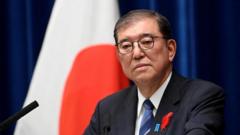**The newly agreed treaty represents a significant development in international health cooperation, aiming to streamline pandemic responses and ensure equitable access to medical resources.**
**WHO Finalizes Groundbreaking Pandemic Treaty Amid Global Health Concerns**

**WHO Finalizes Groundbreaking Pandemic Treaty Amid Global Health Concerns**
**The World Health Organization establishes a legally binding treaty to enhance global pandemic preparedness and response efforts.**
Members of the World Health Organization (WHO) have successfully concluded negotiations for a pioneering legally binding pandemic treaty, designed to improve the world’s readiness and response to future health crises. This treaty is a direct response to the chaos and competitive resource allocation witnessed during the Covid-19 pandemic, with the goal of fostering cooperation and coordination among nations.
Central to the treaty are provisions that encourage swift sharing of data regarding emerging diseases, which will facilitate quicker development of vaccines and treatments by scientists and the pharmaceutical sector. For the first time, the WHO will take a comprehensive look at global supply chains for essential items such as masks, medical gowns, and personal protective equipment (PPE), enhancing oversight and ensuring preparedness.
Dr. Tedros Adhanom Ghebreyesus, WHO's director-general, hailed the agreement as a historic moment in advancing global health security. He emphasized its role in demonstrating that "multilateralism is alive and well," highlighting the importance of a united approach amidst a fragmented world.
This binding pact, established after three years of negotiations among member states, stands as only the second of its kind in WHO’s 75-year history, following the tobacco control agreement in 2003. However, it awaits formal adoption during next month’s World Health Assembly.
Notably, US involvement in the treaty discussions was limited, following the announcement of its intent to withdraw from the WHO in 2026 under President Trump’s administration. As such, the United States may not be obligated to adhere to the treaty.
Key stipulations in the agreement mandate that nations ensure the availability of pandemic-related medications on a global scale during future outbreaks. Participating pharmaceutical manufacturers are committed to allocating 20 percent of their production of vaccines, therapeutics, and diagnostics to the WHO, with a minimum of 10 percent designated for donation and the remainder sold at affordable prices.
Moreover, the treaty endorses the transfer of health technologies to developing nations, contingent on mutual consent, aiming to bolster local production capabilities of essential medicines and vaccines during health emergencies. This element, however, sparked controversy, particularly given ongoing grievances from developing nations over vaccine distribution during the Covid-19 pandemic and concerns from wealthier countries about potential impediments to research and innovation.
A core focus of the treaty is a proposed Pathogen Access and Benefit-Sharing System (PABS), which aims to expedite data sharing amongst pharmaceutical companies, thus improving response times in future pandemics. The agreement represents a momentous step towards improved global health strategies and equitable access to medical resources.





















